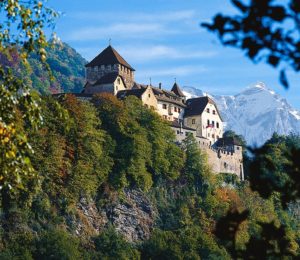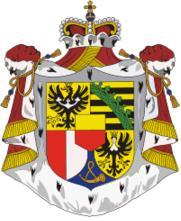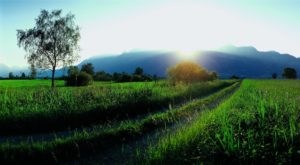Receive our newsletter
Your e-mail address is only used to send you our newsletter and information about the activities of Strasbourg Europe. You can always use the unsubscribe link included in the newsletter.
Source: CIA World Factbook
 Vaduz, the capital of Liechtenstein, is the seat of the national government, as well as the home of the princely family. Vaduz’s older neighborhoods, Mitteldorf and Oberdorf, are known for their gorgeous historical houses.
Vaduz, the capital of Liechtenstein, is the seat of the national government, as well as the home of the princely family. Vaduz’s older neighborhoods, Mitteldorf and Oberdorf, are known for their gorgeous historical houses.
On top of the hill, the Vaduz castle overlook the city. It has been the residence of princes of Liechtenstein since 1712, and is over 700 years old. The princely family lived there until 1938. Even though the castle is not open to the public, one may enjoy the panoramic view over the valley of the Rhine from the “Kanzeli” view point.
The city of Vaduz has several museums: the Museum of Fine Arts, a masterpiece of architecture in the shape of a black cube; the National Museum, which invites visitors to discover the history of the Principality; and the Ski Museum.
Castle of Vaduz

The Princely House of Liechtenstein is one of the oldest noble families of Europe. In 1938, Prince Franz Josef II (1906-1989) was the first Prince of Liechtenstein to move his permanent residence to Vaduz. On November 13th, 1989, following the death of Prince Franz Joseph II, his son Prince Hans-Adam II assumed the regency.
On August.15th, 2004, Prince Hans-Adam II entrusted Hereditary Prince Alois, in preparation for succession of the Throne, as his representative with the exercise of the princely rights appertaining to him. Thus, the Hereditary Prince has been performing the duties of Head of State of the Principality of Liechtenstein, both nationally and internationally.
The coat of arms of the Principality of Liechtenstein is also the national coat of arms. It can be used only by the members of the princely family and the public power. The different symbols and the combined emblems in the national coat of arms are references to the history of the Prince dynasty.
Extraordinary Geography
 Apart from Uzbekistan, Liechtenstein is the only landlocked country to be surrounded only by other non-coastal countries. In addition to its geographical situation, it is also one of the four smallest countries in Europe, the others being Monaco, San Marino and the Vatican.
Apart from Uzbekistan, Liechtenstein is the only landlocked country to be surrounded only by other non-coastal countries. In addition to its geographical situation, it is also one of the four smallest countries in Europe, the others being Monaco, San Marino and the Vatican. The people in Liechtenstein love the traditionnal food of their country, such as “Kasknopfle”, made of gnocchi with cheese. But as gourmets of fine taste, they also appreciate the haute cuisine : no less than five restaurants received high marks in the Gault Millau 2008.
Additional sources: Communications and public relations office of Liechtenstein
Your e-mail address is only used to send you our newsletter and information about the activities of Strasbourg Europe. You can always use the unsubscribe link included in the newsletter.
Information Center
on the European Institutions (CIIE)
Europe Direct Information Center
All rights reserved to the CIIE
Non-profit organization
Mailing address
1 allée Kastner
67000 Strasbourg
France
Visitors entrance
8 rue Boecklin
67000 Strasbourg
France
To provide the best experiences, we use technologies such as cookies to store and/or access device information. Consenting to these technologies will allow us to process data such as browsing behavior or unique IDs on this site. Failure to consent or withdrawing consent may adversely affect certain features and functions.
Europe Direct network
The CIIE team
Contact information and opening hours
Lieu d’Europe
The CIIE offices
Contact us
CIIE’s Documentation Centre & Publications
School presentations & Activities
Borrowing of learning material
Activities for the general public
Institutions of the European Union in Strasbourg
Institutions Under the Authority of the Council of Europe
Other European Organisations in Strasbourg
Sessions of the European institutions in Strasbourg
Visiting the institutions
Map of the European district of Strasbourg
Institutions in Strasbourg in photos
Discover artistic Europe
National holidays of the member states of the Council of Europe